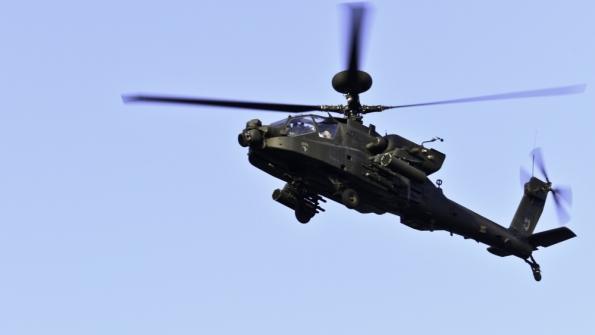
LONDON and WASHINGTON—The British Army and U.S. Army are to align modernization efforts to enable them to operate more seamlessly.
UK Armed Forces Minister James Heappey and U.S. Army Secretary Ryan McCarthy signed a memorandum of agreement in London on joint modernization, the UK ministry of defense announced July 14.
Notably, the plans include creating what officials call a “closer affiliation” on the U.S. Army’s Future Vertical Lift (FVL) rotorcraft modernization initiative. The two countries also will improve “bilateral capability development” of long-range precision fires.
The UK is already an observer to the FVL initiative, which includes the development of a Future Attack Reconnaissance Aircraft and the Future Long-Range Assault Aircraft. The UK’s Joint Helicopter Command, which manages the UK’s battlefield helicopter fleets, is undertaking an extensive study of the needs of the UK’s helicopter forces, with consideration of high-speed rotorcraft and what role they could play in future missions.
“In an age of great power competition and constant conflict, there is an even greater onus on us to work together with our greatest allies,” Heappey said. “This agreement signals our shared determination to develop the novel capabilities that will give us that battle-winning edge and opportunity for the defense industry on both sides of the Atlantic.”
“This partnership allows costly and complex problems to be distributed and helps protect the industrial base through enabling faster innovation and cost-sharing toward achieving our modernization priorities,” McCarthy said.
The UK has been taking steps toward closer interoperability with the U.S. Army, buying the standard model AH-64E Apache attack helicopter from Boeing rather than having the aircraft remanufactured in the UK. Consideration has also been given to aligning Chinook buys with the U.S. Army.
The new agreement allows the respective services to meet over the next several months to view the capabilities that best support their needs, McCarthy told reporters July 15. The July 13 meeting in London was the first stop of a European junket McCarthy had to delay because of the spread of the novel coronavirus.
The two nations will assess how various capabilities are interoperable and determine where there are opportunities for co-development, he added. This includes the Future Attack Reconnaissance Aircraft and the Precision Strike Missile.
“There’s obviously a special relationship. We always fight together,” McCarthy said. “There’s as much potential for economic benefits and military benefits.”
There will be back and forth between the UK and the U.S. Army’s program executive office for aviation, the Future Vertical Lift Cross Functional Team and the Long-Range Precision Fires Cross Functional Team, McCarthy said.
The defense ministry said the agreement was in line with the ambitions of the ongoing Integrated Review announced earlier this year, which is likely to overhaul the UK’s foreign and defense policy, and calls for “modernization and pioneering capabilities” at its core, officials say.
As well as FVL and precision fires, the modernization areas also include shared digital infrastructures and networks, soldier lethality and Assured Positioning, Navigation and Timing (PNT), which the UK’s recent purchase of the OneWeb satellite constellation may be a precursor to, as the British government is looking at providing a PNT capability with the constellation.

